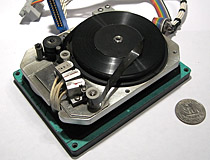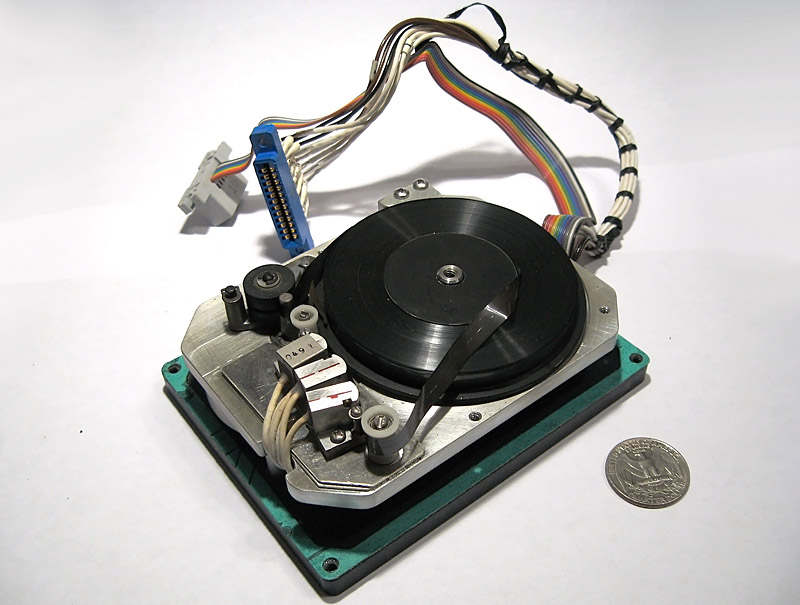Cockpit voice recorders like this B&D Instruments unit are used to provide investigators with clues into the last moments of a aircraft crash. These devices are mounted in nearly every aircraft and continuously record sounds inside the cockpit on an infinite loop. Though commonly called a 'black box' in popular media, most flight recorders are painted orange or yellow for easy visibility in a chaotic crash site. The heart of this device is a International Tapetronics four track tape recorder, which stores analog voice recordings on a single reel of magnetic tape. The tape is wound in an endless loop similar in function to an 8 track music cassette; fresh tape is pulled from the center of the reel, recorded on, and wound back onto the outside in an endless cycle. Much of this flight recorder's internal volume is taken up by the protective barriers that allow the Tapetronics module to survive a violent crash. A layer of magnetic shielding within a thick ceramic encasement provides protection from shocks, flames, and magnetic fields. This is further sealed inside of a heavy machined aluminum block, with a gasketed seam to protect against water landings. The small amount of electronics needed to control the Tapetronics module are located in a card cage in the rear quarter of the flight recorder's case.
The empty bracket on the front of the device would have originally contained a Dukane DK100 emergency transmitter. This battery powered device would broadcast a tracking signal in the event of a water crash, guiding investigators to the location of the voice recorder. The emergency transmitter will activate automatically when immersed in water.







 Return to Communication Equipment
Return to Communication Equipment